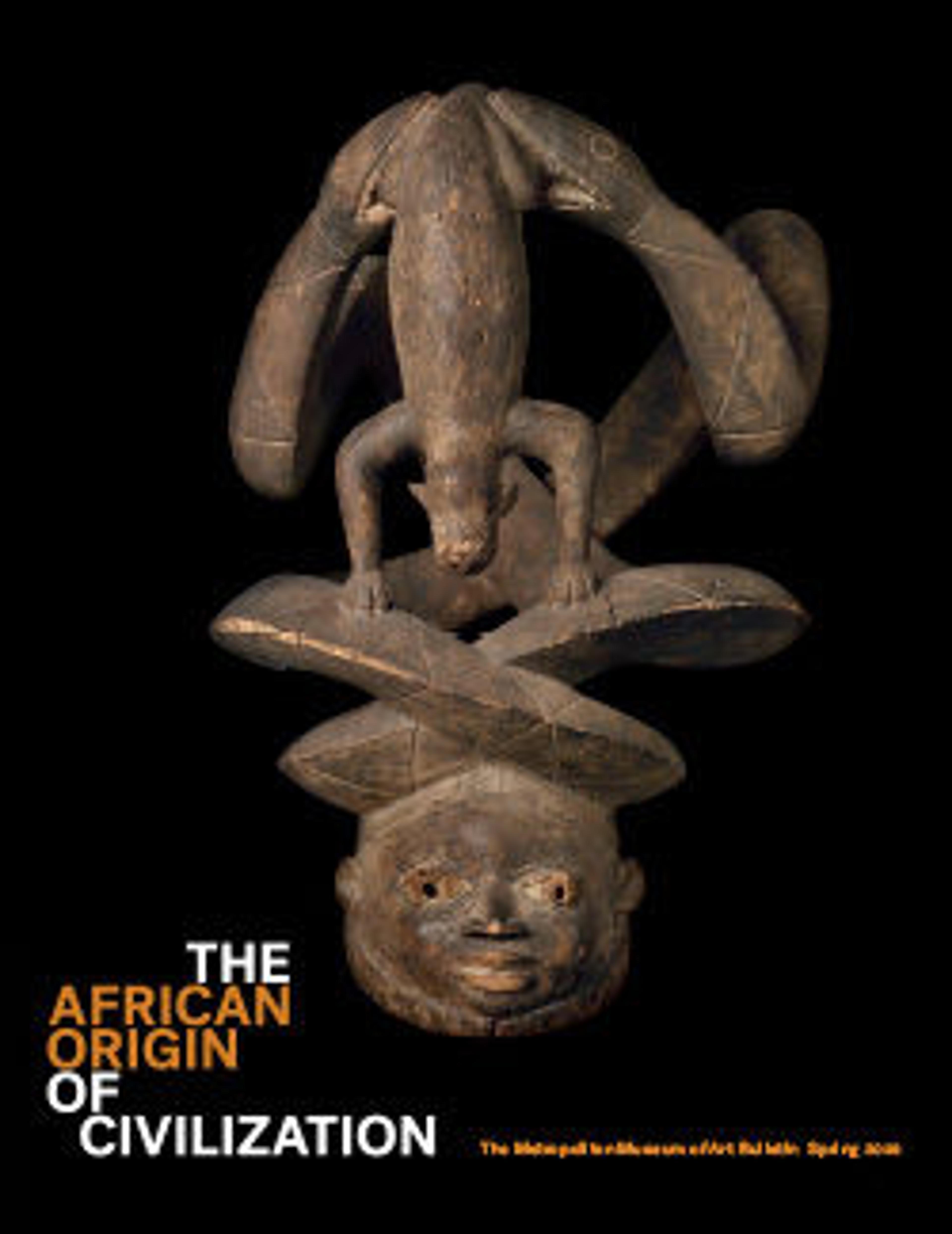Gẹ̀lẹ̀dẹ́ helmet mask
Gẹ̀lẹ̀dẹ́ is danced by men to honor and appease the powers of living, ancestral, or deified women who are collectively referred to as àwọn ìyá wa, or "our mothers." Staged in the marketplace, where women are an economic powerhouse, this theatrical genre is believed to have originated in the Ketu region bordering present-day Nigeria and Benin during the eighteenth century. The standardized face at the base is the foundation for a dynamic composition in which the hind legs of a porcupine are devoured by serpents. Animal images act as metaphors for human personalities and interactions. Depictions of snakes seizing other creatures communicate competing social or spiritual powers. Because of their voracious appetites and sluggish movements, porcupines reference gluttony and selfishness. The elegant arrangement of these intertwined creatures imaginatively recasts the decorative flair of a gèlè, the fabric headwrap worn by women that is frequently integrated into gẹ̀lẹ̀dẹ́ costumes.
Artwork Details
- Title:Gẹ̀lẹ̀dẹ́ helmet mask
- Artist:Yoruba artist
- Date:mid-20th century
- Geography:southwestern Nigeria or Republic of Benin, Ketu region
- Culture:Yoruba
- Medium:Wood
- Dimensions:H. 22 1/2 x W. 15 1/4 x D. 18 in. (57.2 x 38.7 x 45.7 cm)
- Classification:Wood-Sculpture
- Credit Line:Gift of Paul and Ruth W. Tishman, 1990
- Object Number:1990.336
- Curatorial Department: The Michael C. Rockefeller Wing
More Artwork
Research Resources
The Met provides unparalleled resources for research and welcomes an international community of students and scholars. The Met's Open Access API is where creators and researchers can connect to the The Met collection. Open Access data and public domain images are available for unrestricted commercial and noncommercial use without permission or fee.
To request images under copyright and other restrictions, please use this Image Request form.
Feedback
We continue to research and examine historical and cultural context for objects in The Met collection. If you have comments or questions about this object record, please contact us using the form below. The Museum looks forward to receiving your comments.
